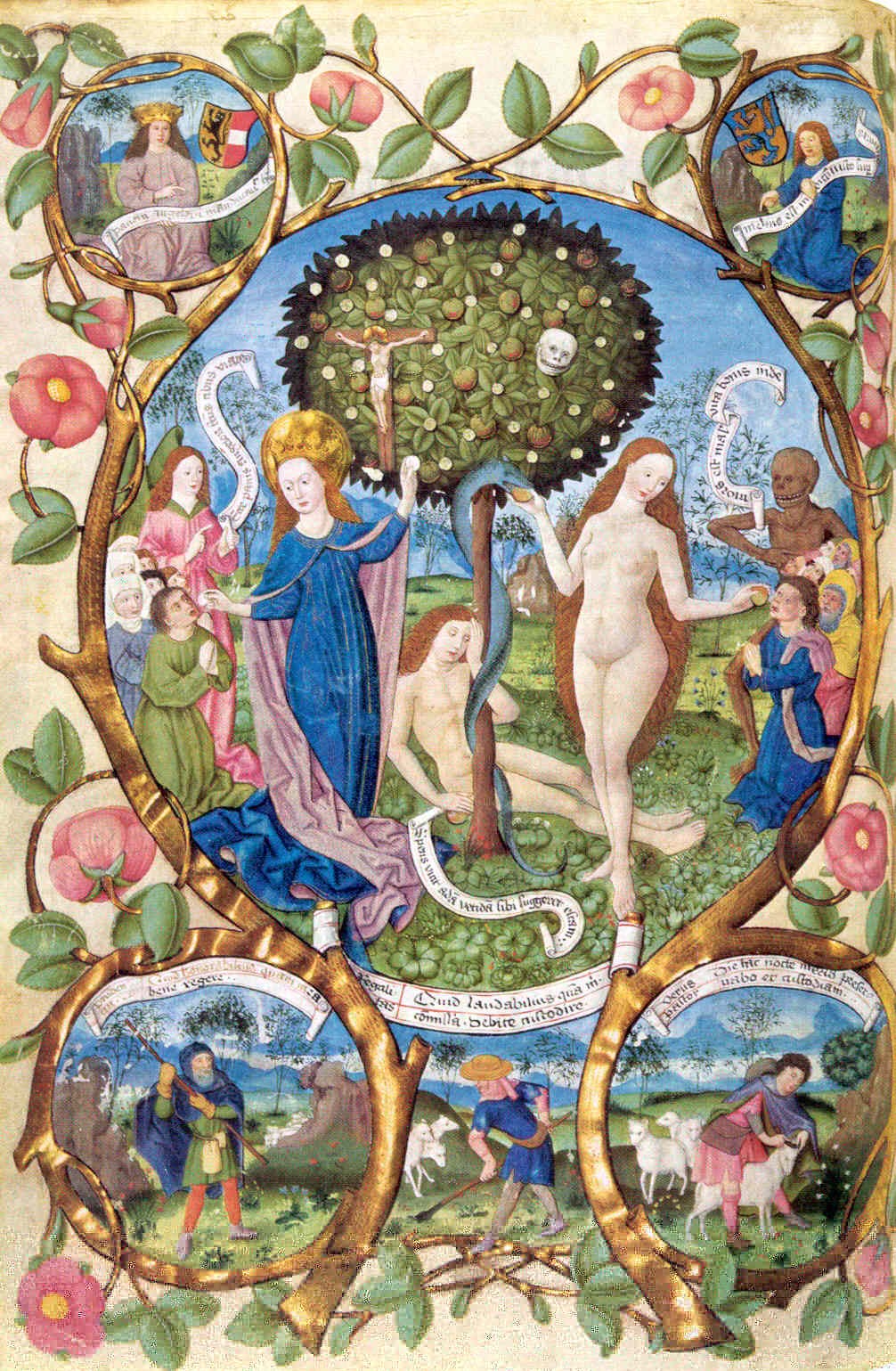
Are you happier now that the gods are dying?
Or do you dream of Heston with omniscient beard?
You should be happier now with no one to pray to
Or would you love to break your knees while begging and praying?Bite hard
It’s a broken smile— Franz Ferdinand, “Bite Hard” (YT)
Coincident with Pride Month observed in the month of June, the conservative media outlet The Daily Wire released a documentary entitled “What is a Woman?”. In the documentary, Daily Wire personality Matt Walsh investigates, at some level, the question of gender identity as it relates to the current cultural topic of transgenderism in America. The documentary’s title dovetails well with a recent short line of questioning asked of U.S. Supreme Court nominee Judge Ketanji Brown Jackson by the senior U.S. Senator from Tennessee, Marsha Blackburn:
Sen. Blackburn: “Can you provide a definition for the word ‘woman’?”
Judge Jackson: “Can I provide a definition? No, I can’t. […] Not in this context. I’m not a biologist.”
Sen. Blackburn: “The meaning of the word ‘woman’ is so unclear and controversial that you can’t give me a definition?”
Judge Jackson: “Senator, in my work as a judge, what I do is I address disputes. If there’s a dispute about a definition, people make arguments and I look at the law and I decide. So I’m not…”
Sen. Blackburn: “The fact that you can’t give me a straight answer about something as fundamental as what a woman is underscores the dangers of the kinds of progressive education that we are hearing about.”
Judge Jackson’s answer is absolutely expert and courant with the times. She could have easily given the post-modernist answer that litters Mr. Walsh’s documentary, an answer about how the definition of a woman is up to each person to determine. Had she done that, though, she would have opened herself up to a line of questioning from Sen. Blackburn about her own definition of the word “woman”, which could be seen by the progressive left as transgressing on the right of others to determine their own definition. Instead, Judge Jackson sidestepped the desired modernist answer, which one might expect to be some dry fact along the lines of a scientific definition about chromosomes or something as cursory as “an adult human female” (the answer clearly sought by Mr. Walsh in his documentary), but in so doing, she also defers to the scientific expertise prized by modernism by referring to the need for a biologist to answer this question.
It is no surprise the dialogue between Sen. Blackburn and Judge Jackson fell flat. “What is a woman?” is a question that is extremely modernist in its framing, and all thoughts on The Daily Wire documentary aside, is a poor question to ask in the current American cultural context if one seeks real dialogue, because it fails to really grapple with the root cause of the divide between conservative modernists and progressive post-modernists.
It should come as no surprise, because the questioner, Sen. Blackburn, is herself a Protestant modernist asking a very typical modernist question without any meaningful reference to human history. We can hardly assign any fault to Sen. Blackburn, though: Protestants have been doing this since their infancy.
The Leveling of Heaven
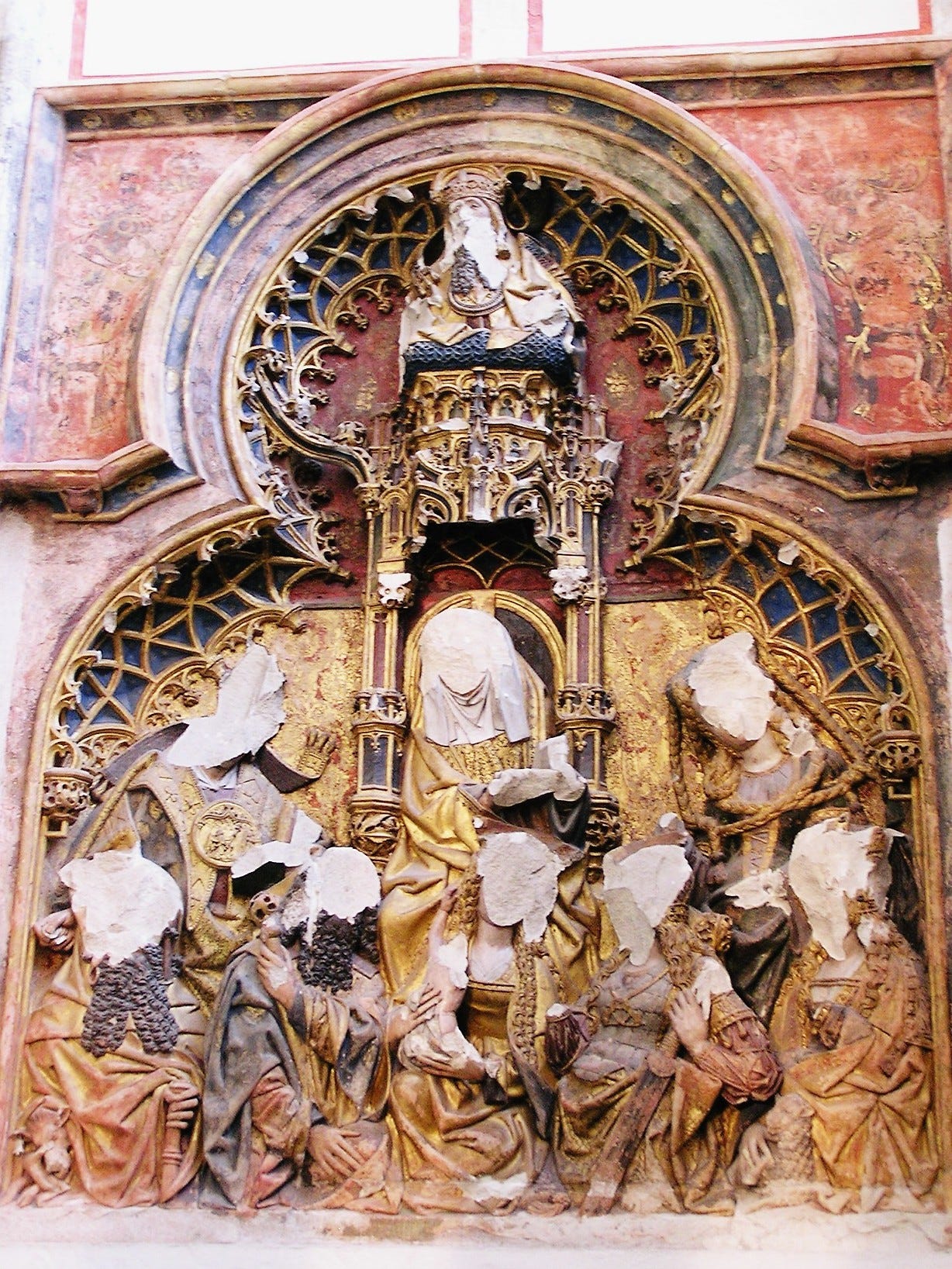
Psychology professor turned Jungian archetype incarnate Dr. Jordan Peterson and those in his circle have highlighted the “meaning crisis,” broadly understood as a generation of young people who struggle with an across-the-board failure-to-launch in relationships, career, and any real sense of “purpose” and “meaning” in their lives. Christian Reformed Church pastor and YouTube commentator Paul Vander Klay, (“PVK” to those in the know) who has frequently discussed Dr. Peterson, the Intellectual Dark Web, and the meaning crisis, recently gave a Petersonian take on the meaning crisis, asserting that some degree of “sacrifice” is necessary in order to gain meaning. Here, a Petersonian view might mean something like “sacrificing” time and effort to haul one’s mortal coil around in exercise, attaining in return for this “sacrifice” a sense of self-confidence together with improved health outcomes. A Petersonian would argue that these kinds of “sacrifices” can, taken together, accumulate a sense of meaning and purpose and thereby fill the gaping hole of lethargic nihilism in the young. (Pastor PVK tries to extend this understanding of sacrifice all the way to technology, a point to which I will respond in another post.)
However, the meaning crisis is not a sacrificial crisis — it is a mimetic one. With the advent of modernism and her indigo stepchild, post-modernism, Western society boldly swung for the fences in the direction of individuality and self-determination, holding on for dear life to quite tenuous concepts like free will. As the Protestant Reformation wended its way through Europe in the 16th century, it became fashionable for the Protestors to occasionally engage in ecstatic bursts of iconoclasm. Roving groups of protestors would frequently work themselves up to ransack and destroy Catholic churches, defacing reliefs on the exteriors, and tearing down art and statues inside. The leveling of Heaven by the Protestants, the erasing of images and the cancelling of the saints, meant that each person was free to exist and self-determine that existence in their own bubble, negotiating directly with the Lord without any intermediary. In so doing, the Protestants denied the Incarnation of Christ — for a person-to-Person contact and engagement that formed and molded the human being through millennia of evolution — in favor of the newfangled technology of mass literacy mediated by the futility of human language that God judged at Babel.
This was a radical shift in understanding the human being, because humans are mimetic. Homo sapiens are descendants of a hominoid ancestor that selected over many multiple generations for prominent white sclera in the eyes. It’s impossible to overstate the importance of the sclera to human evolution: no other animal existing today has such prominent white sclera. Only with this degree of white sclera against our irises are we able to notice small flickers of the eye and the turning of attention without the need for gross head movements. This is no accident. This relic of our evolution shows how desperately our ancestors craved to see what — or who — others were looking at. We are wired for mimesis like we are wired to breathe.
However, acknowledgement of cultural artifacts that even unconsciously recognized human evolution and human need was not at the top of the agenda for the zealous Reformers. Instead, the Protestant modernists tore down the statues of the saints, determined Marian veneration to be blasphemous, and declared open season on all hierarchies. The West that the Protestants so generously reformed for us is now predicated on a radical individualism. We refuse to see that we are highly social creatures who are all quite obsessed with each other, practically tripping over ourselves to find models we can imitate without even a moment’s awareness of our own behavior.
To keep the tide of the Roman Church at bay, Protestant modernists appealed to the nascent bourgeois and up-and-coming classes at whom they pushed out these messages of self-determination and individuality: you can determine for yourself what the Bible says, you can determine for yourself your own destiny, free of externally imposed hierarchies, you can talk directly to God, you don’t need the help of clergy or the intercession of the saints to attain the glory of Heaven. Post-modernism takes this sequence of thought one step further and pronounces that the human person is free to also determine their own gender. Protestant modernist politicians then all but reach for their smelling salts on national television, acting as if this is some sort of shocking surprise rather than an entirely logical consequence of their own choices. With the Beeldenstorm against the Catholic churches across Europe in the 16th century, Protestants began the very process of deconstruction that they now so vehemently oppose.
Our Lady of the Future
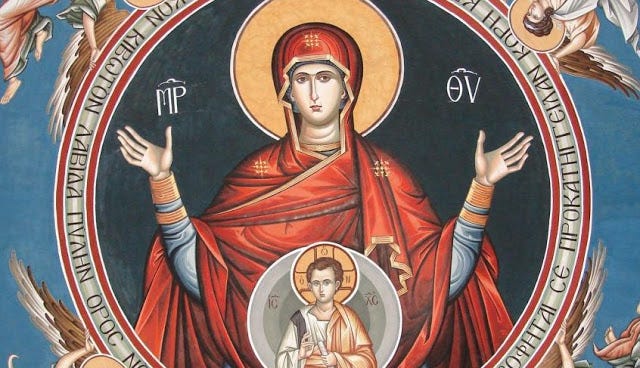
As she queries Judge Jackson, a cross necklace dangling around Sen. Blackburn’s neck occasionally glitters as it catches the light. Notably, Sen. Blackburn wears a cross and not a crucifix, likely because she is true to her Protestantism which eschews the graven image of the corpus of Christ in favor of the abstracted cross that is devoid of any human form. The defacing of Catholic images in the 16th century Beeldenstorm was a particular favorite pastime of the Calvinists, who count among their spiritual descendants none other than Sen. Blackburn herself, a churchgoing Presbyterian.
If she is a typical Protestant, Sen. Blackburn is unlikely to have any significant devotion to or meaningful construction of the Virgin Mary beyond some vaguely good tapioca pudding-like feelings toward her that may bubble up each December when Pentatonix’s cover of the theologically incorrect “Mary, Did You Know?” pops up on her Spotify.
Interestingly, what makes the Protestant fan favorite “Mary, Did You Know?” so theologically incorrect is its lack of reference to the Annunciation and Mary’s Magnificat. After the Archangel Gabriel announces to Mary that she will bear the people of Israel’s long-awaited Messiah, she gives her assent, her fiat, and then begins to worship the God of Israel in what is called the “Magnificat”. This moment in the Gospel of Luke is important because it is the moment that Mary, previously a teenaged girl, becomes not only a mother, but the Mother of God, the Theotokos (“God-bearer”), all while remaining a Virgin.
In response to a question about understanding the symbolism of the Theotokos as both Virgin and Mother, the Orthodox icon carver Jonathan Pageau expounded:
“The extremes of reality, the extremes of potentiality, in order to house everything, has to be non-perturbed. […] For the ocean to reflect the sun, it needs to not have waves on it. When it has waves on it, it can reflect the sun in a fragmented way, and so the light will sparkle, but then if you want to reflect the sun directly, you have to be still. […] Through her virginity, Mary becomes the mother of the very principle of reality, the very thing that organizes reality. You have understand her virginity not just in physical terms, although that’s part of it, but you have understand her virginity in the ‘yes’, in this giving up her will for the will of God. When the archangel comes to present to her that she will be one the who will receive the Christ, this ‘yes’ she answers, and this worship, making herself low, saying ‘yes,’ and then opening herself up in this worship. That is the relationship between a virgin and mother.
A normal mother is mitigated along those lines. […] There’s also an aspect of that which is there even in the Christian family, for example. It’s not total virginity, because that’s for the totality, but in terms of properly hosting the seed of her husband, that a woman must be chaste — must be dedicated to her husband — she’s not a complete virgin for everything, but she has to be virginal in relation to all the other men and chaste toward her husband. If she’s not, then that will sow confusion, obviously. You might not even know who the father is. The dedication, the capacity to be a virgin to everything else, is also what gives the possibility of properly hosting the masculine toward which she’s dedicated. It’s a fractal, a mini-version of the Virgin and Mother, on a smaller scale. That’s actually how reality works. You can’t have something be many things at the same time: it has to have a form of dedication which appears as virginal to everything else. It’s not confused with other things. It’s space which is open to only one manifestation, and that’s how you can have something exists in the world without being confused.”
In her fiat — let it be done unto me — Mary completely and utterly surrenders her own self-determination to the Divine Will of God. She is not on a journey of individualism or self-discovery. A messenger archangel has descended from the hierarchy of Heaven to request her agreement in the plan of human salvation. Mary responds by submitting herself to this much higher pattern, as if she even knows that she would not be capable of fully apprehending herself and her own potentiality. In her surrender, she allows this highest Order to instead shape her by letting her carry the future for which generations of her own ancestors have so longed.
The icon “Theotokos of the Sign" shows Mary after her fiat, her hands held up in a surrendering worship to God. Christ is now nestled within her: she is now the vessel of potentiality, the means by which the future is fully realized here in this flesh-blood-and-bone reality of ours. Mary loans her own nature to give form to Christ, the icon of God Himself, the One who proclaims His being to St. John the Beloved in the vision on Patmos: “I am the Alpha and the Omega, the First and the Last, the Beginning and the End” (Rev. 22:13). Christ is the source and summit of all potentiality. He inhabits and fully realizes all the patterns of reality by calling them into the fulness of their being. In so doing, He fully orders these patterns back in the hierarchy under the rule of God the Father, the Creator of Heaven and Earth.
New Names and Secret Selves
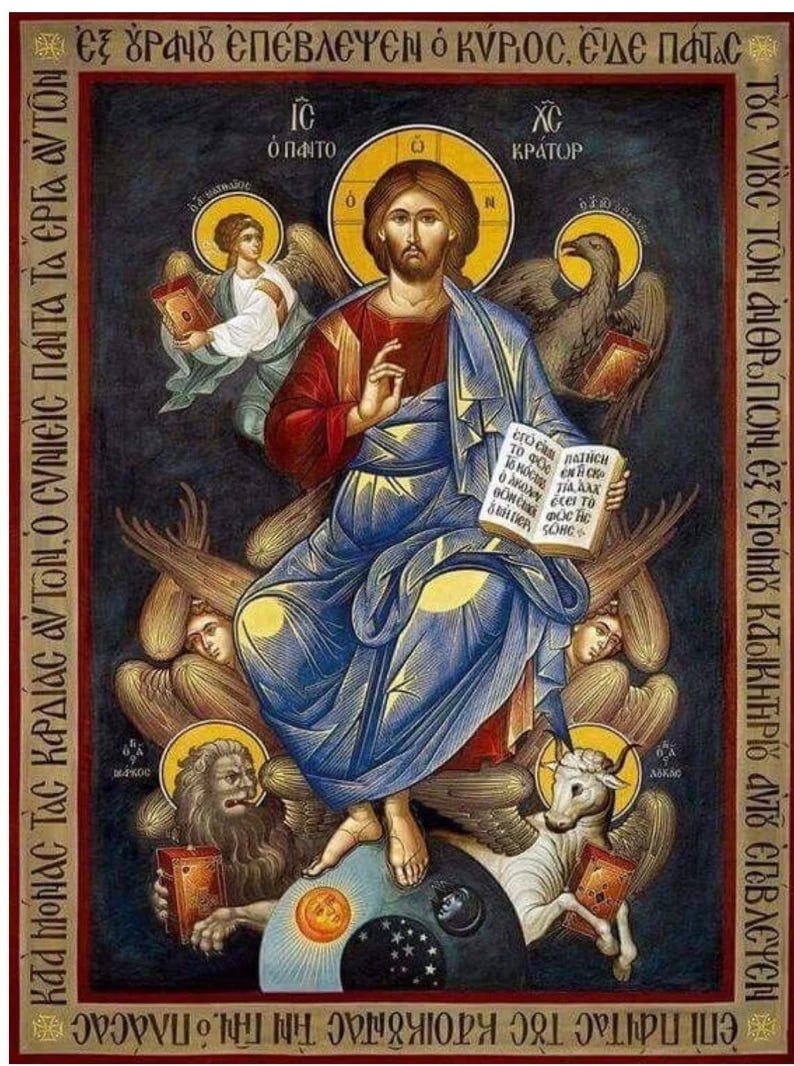
Be adored among men,
God, three-numbered form;
Wring thy rebel, dogged in den,
Man's malice, with wrecking and storm.
Beyond saying sweet, past telling of tongue,
Thou art lightning and love, I found it, a winter and warm;
Father and fondler of heart thou hast wrung:
Hast thy dark descending and most art merciful then.With an anvil-ding
And with fire in him forge thy will
Or rather, rather then, stealing as Spring
Through him, melt him but master him still:
Whether at once, as once at a crash Paul,
Or as Austin, a lingering-out sweet skill,
Make mercy in all of us, out of us all
Mastery, but be adored, but be adored King.— “The Wreck of the Deutschland” by Gerard Manley Hopkins (via)
The question of “What is a woman?” in our current discourse is less functional than other questions like, “What does it mean to be a woman?” or, more fundamentally, “What is a self?” and “Who determines what a self is?”
What meaningful answers does a properly ordered Christianity have to answer to those questions? The investor-entrepreneur Peter Thiel may have an answer when he noted, “I would say that Christianity, for me, is the anti-identity. Your identity is in Christ, and not all these other senses of the word ‘identity.’” Elsewhere, Mr. Thiel also stated that, “When I was an undergraduate, the sort of Campus Crusade [for Christ] idea was that God had a plan for your life, that you had to figure it out, and that would translate into a vocation, and we don’t talk like that anymore.” Taken together, Mr. Thiel’s comments could be read to suggest an idea of identity and purpose as discovered in a relationship between the believer and Christ.
It is possible that Mr. Thiel’s comment about the “anti-identity” in Christ alone may be reflecting back a particular verse in the Book of Revelation. Here, St. John the Beloved writes of the Lord Jesus saying, “To the one who is victorious, I will give some of the hidden manna. I will also give that person a white stone with a new name written on it, known only to the one who receives it” (Rev. 2:17). It is as cryptic as any other line in Revelation, but there’s an arguable interpretation that suggests that the believer has a sort of secret identity with Christ, that there is something that can only be called into being from a person in relationship to Christ, understanding their relationship to Him properly as the Innocent Victim Who is King of all hierarchies. In this person-to-Person relationship, Christ calls out some sort of secret self from the believer, a self that has been fashioned for a specific purpose only to be fully understood at the end of time. When this self fully emerges, triumphant, the believer is given a new name that is held as a secret between them and Christ.
The mystery of our being is not for us to immediately know. We may find help as we ascend Jacob’s Ladder, through the hierarchy that the Protestants shunned. Mr. Pageau commented to Dr. Peterson last year, in encouraging him to join a church community, with some useful insights:
“It’s not just about going to church. […] There’s something about being in a hierarchy. There’s an aspect of being in a hierarchy that you talk about, which is striving to be the best within that hierarchy. But there’s an aspect in which that hierarchy covers you. […] There’s a value in being in a community in a hierarchy. […] It’s not just a living community, those that are alive in the hierarchy, but those that have left their stories. You see people as examples who have lived through difficult things that you can shoulder up against. […] When I say, ‘go to church,’ it’s not because I’m trying to moralize you into doing something. It’s actually a participation in how the best vision of reality works.”
Perhaps we do not need to insist on the leveling of Heaven as Sen. Blackburn’s spiritual forebears would have done. Perhaps we need to reconsider the meaning crisis brought about by an assertion of radical self-determination, the notion that a human being, in addition to coping with the struggles of existence, must also face the burden of finding their own meaning or else slip into a self-imploding nihilism.
Your sister sees the future
Like your mama and yourself
You've never learned to read or write
There's no books upon your shelf
And your pleasure knows no limits
Your voice is like a meadowlark
But your heart is like an ocean
Mysterious and dark— Bob Dylan, “One More Cup of Coffee” (YT)
Maybe it is the case that we do need the hierarchy, a set of models in Christ, Mary, and the saints, and we need to allow ourselves to voluntarily and consciously take them on models for us to imitate. These are positive models because they are correctly ordered toward knowing and understanding our own lying, cheating, scapegoating selves under the gentle care of the all-forgiving Innocent Victim Himself. We can entrust our own self-development and self-discovery to the hierarchy of Heaven, because it is oriented toward the revelation and full expression of the highest good of all reality. We mortals, whose hearts are “like an ocean mysterious and dark”, inscrutable even to ourselves, incapable of seeing even five minutes into our own future, need not shoulder the enormous responsibility of understanding the mystery of our purpose throughout all time to the Last Day.
Pray for the Wanderer
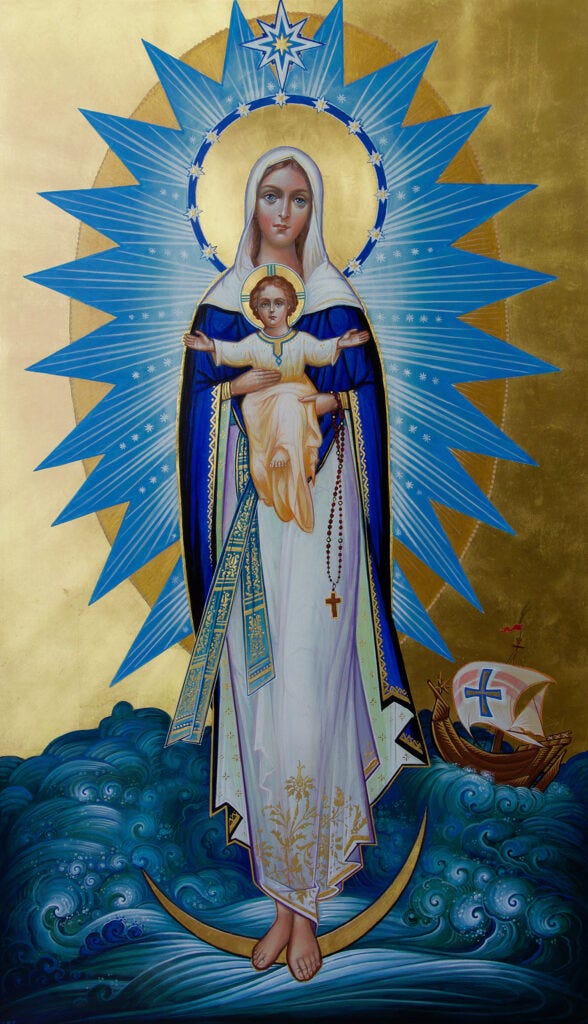
In “What is a Woman?”, Mr. Walsh includes among his interviews for the documentary a visit with the Maasai, a contemporary quasi-pastoralist hunter-gatherer tribe in Kenya that provide a living window into the human past. Contra Americans, the Maasai explain to Mr. Walsh that the basics of anatomy inform the determination of gender identity, and appear puzzled when Mr. Walsh suggests that people in America would disagree. While one understanding of the Maasai’s answer could be that the Maasai have patriarchal systems of oppression that are either innate to the tribe rising from social or biological causes, or otherwise gleaned from the Western colonizing influence in Africa, another understanding could be that the Maasai, who have barely utilized the technology of fire, are still relatively naïve to the modernist Weltanschauung of self-determination, and instead understand a person’s situation in the world as at least partially informed by factors that they did not and cannot choose.
But the present West is far distant from the sun-soaked lands of the Serengeti, and must contend with itself and its own decisions. While we remain directionless out on these dark, choppy waters of post-modernism, we may have no choice but to look up to Heaven at the Virgin Mother, resplendent with the fruits of her surrender to the Divine Will, as we plead with her to help us bring the future into being:
Hail, Queen of Heav'n, the ocean Star,
Guide of the wanderer here below!
Thrown on life's surge we claim thy care,
Save us from peril and from woe.
Mother of Christ, Star of the sea,
Pray for the wanderer, pray for me.



for those of us born in a world steeped in postmodernism and it's fallout, the journey to reach outside the cave is a steep climb. This torturous path is somewhat soothed if we take the Kierkegaardian leap of faith, although I find myself wondering about the other ways out..